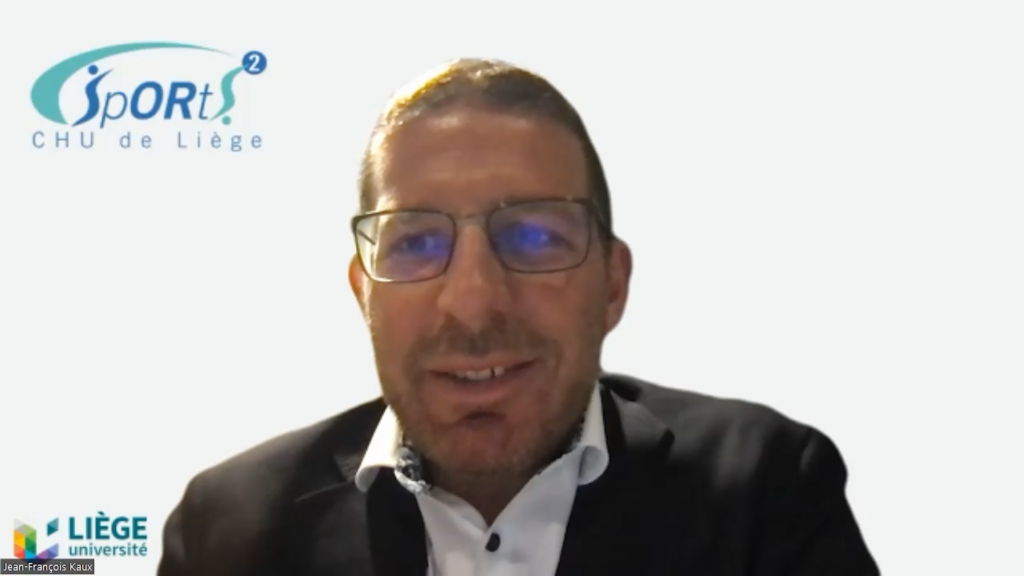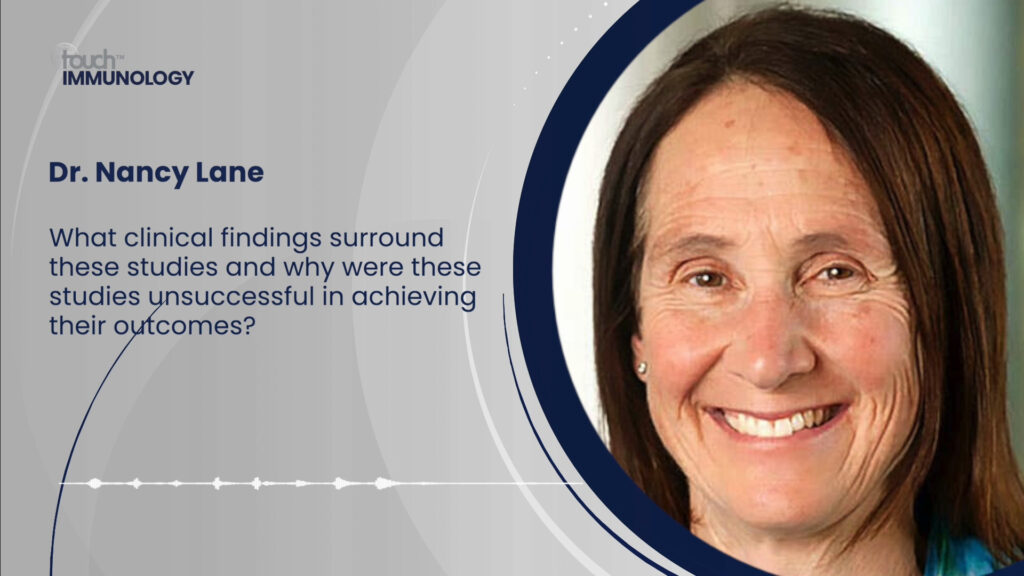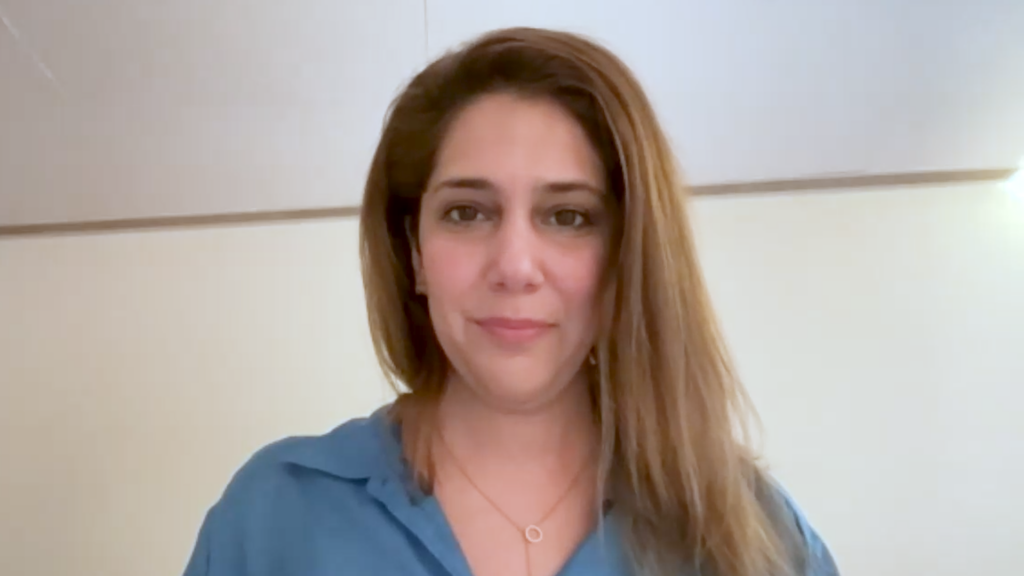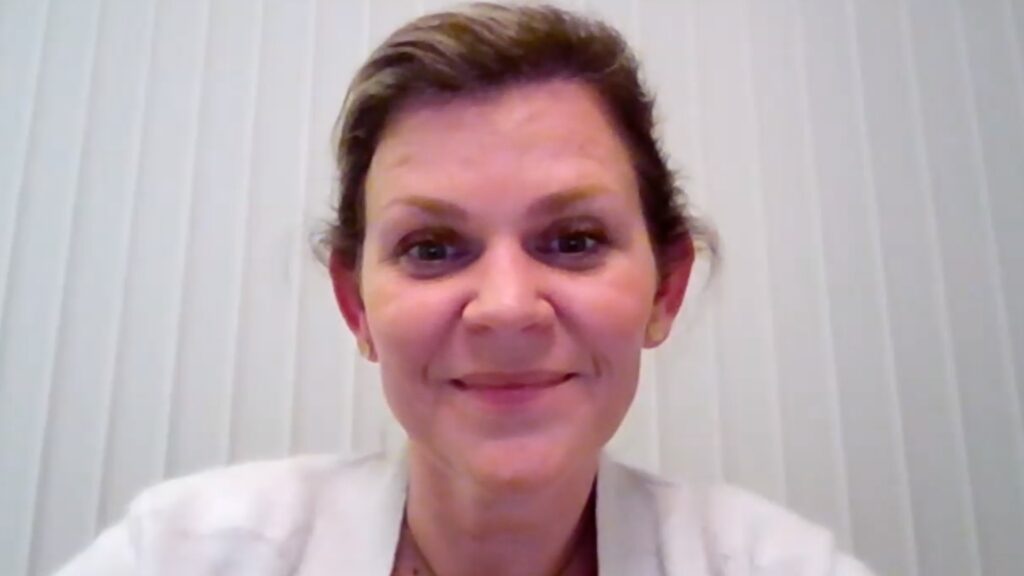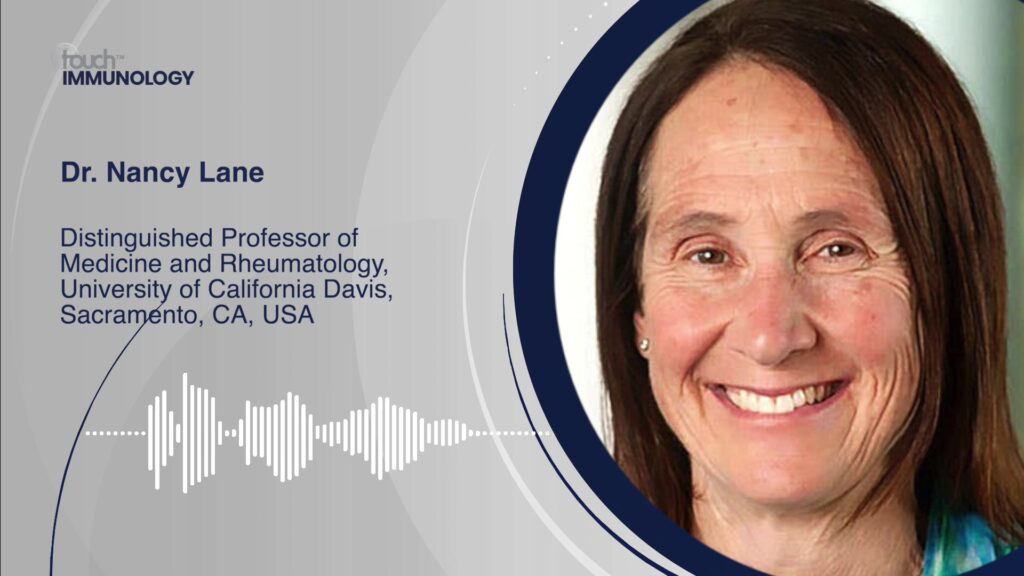Hand osteoarthritis is a degenerative joint disease in which the smooth cartilage that covers the bone surfaces at the joints either is injured or wears over time. touchIMMUNOLOGY were delighted to speak with Dr Anna Døssing (The Parker Institute, University of Copenhagen Copenhagen, Denmark) about hand osteoarthritis and the challenges in its treatment.
The abstract ‘Colchicine twice daily for hand osteoarthritis: results from the double-blind, randomised, placebo-controlled COLOR trial‘ was presented at the European Alliance of Associations for Rheumatology (EULAR), 31 May – 03 June 2023.
Questions
- Could you tell us a little about hand osteoarthritis and the challenges in its treatment?(0:16)
Disclosures: Anna Døssing has nothing to disclose in relation to this video interview.
Support: Interview and filming supported by Touch Medical Media Ltd. Interview conducted by Shanice Allen.
Filmed in coverage of the European Alliance of Associations for Rheumatology (EULAR) Annual Meeting
Click here for more content from EULAR.
Transcript
Hi. My name is Anna Døssing. I’m a medical doctor from Copenhagen Denmark and I’m training as a rheumatologist.
Could you tell us a little about hand osteoarthritis and the challenges in its treatment?
The main thing you need to know about hand osteoarthritis is that it is common and it is chronic. So the life time risk of developing hand OA is around 40%. And once you get it, it’s a chronic disease. So what people complain about is pain, is stiffness and is reduced function. Pain is the dominant symptom, and people get, like, a constant pain, but they can also have, like, flares or periods with intermittent worsening of the pain. What sets hand OA apart from OA in other places in the body is that you get erosions, so you get a destruction of the joint which we do not see with OA in other places in the body, and this is considered a somewhat more aggressive type of OA. So the key challenges of treating hand OA is the lack of effective long term solutions, pharmacologically speaking. So we both have non-steroidal anti inflammatory drugs and glucocorticoids that have proven effectiveness in hand OA. But this treatment, when used systemic, may not be suitable for an elderly population which are those primarily affected, and they’re not suitable for long term use. So there’s definitely a gap there, in the treatment.
Subtitles and transcript are autogenerated.




